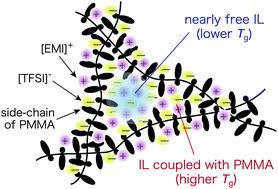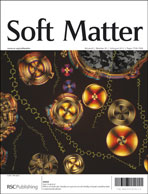We have investigated the microscopic dynamics of ion gels consisting of a PMMA [poly(methyl methacrylate)] network and EMITFSI [1-ethyl-3-methylimidazolium bis(trifluoromethanesulfonyl)imide] as the ionic liquid by means of quasi-elastic neutron scattering (QENS). These ion gels interestingly exhibit two glass transitions (Tgs) which drastically decrease as the ionic liquid content increases. QENS allows us to probe the dynamics of PMMA and the EMI [1-ethyl-3-methylimidazolium] cation separately, by selectively deuterating the individual components, and gain insight into the glassy properties of this system. A comprehensive analysis of the QENS spectra was performed, revealing a number of characteristic relaxations, including intramolecular ones, each of which was assigned. We found that the activation energy for PMMA diffusion decreases with increasing ionic liquid content, corresponding to the plasticization of the polymer. The ionic liquid showed two characteristic relaxations: a motion strongly coupled to the motion of PMMA which we argue to be the motion of part of the ionic liquid which is bound to the PMMA giving rise to a higher effective Tg and an ionic diffusion associated with ionic liquid molecules far from the polymer chains which behave nearly as free liquid, exhibiting a lower Tg.

You have access to this article
 Please wait while we load your content...
Something went wrong. Try again?
Please wait while we load your content...
Something went wrong. Try again?


 Please wait while we load your content...
Please wait while we load your content...